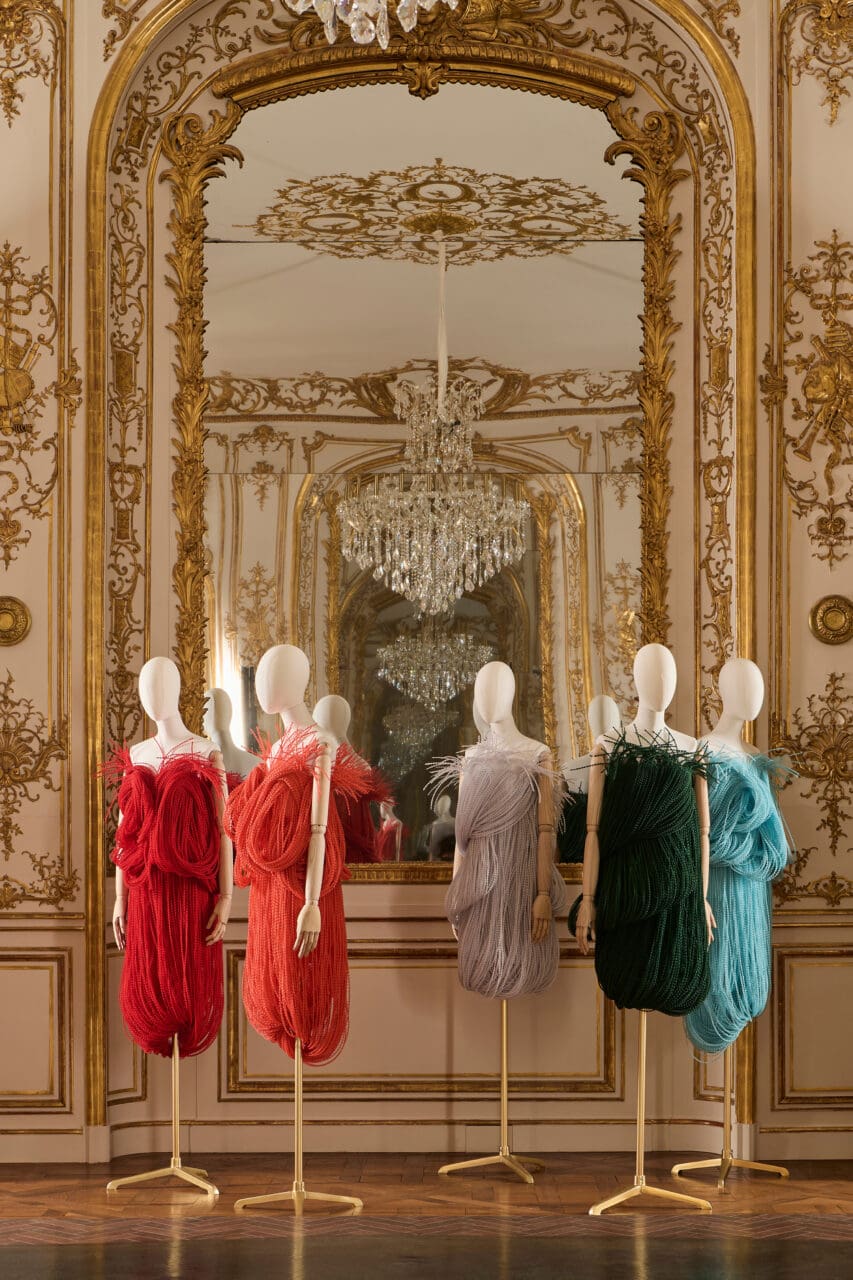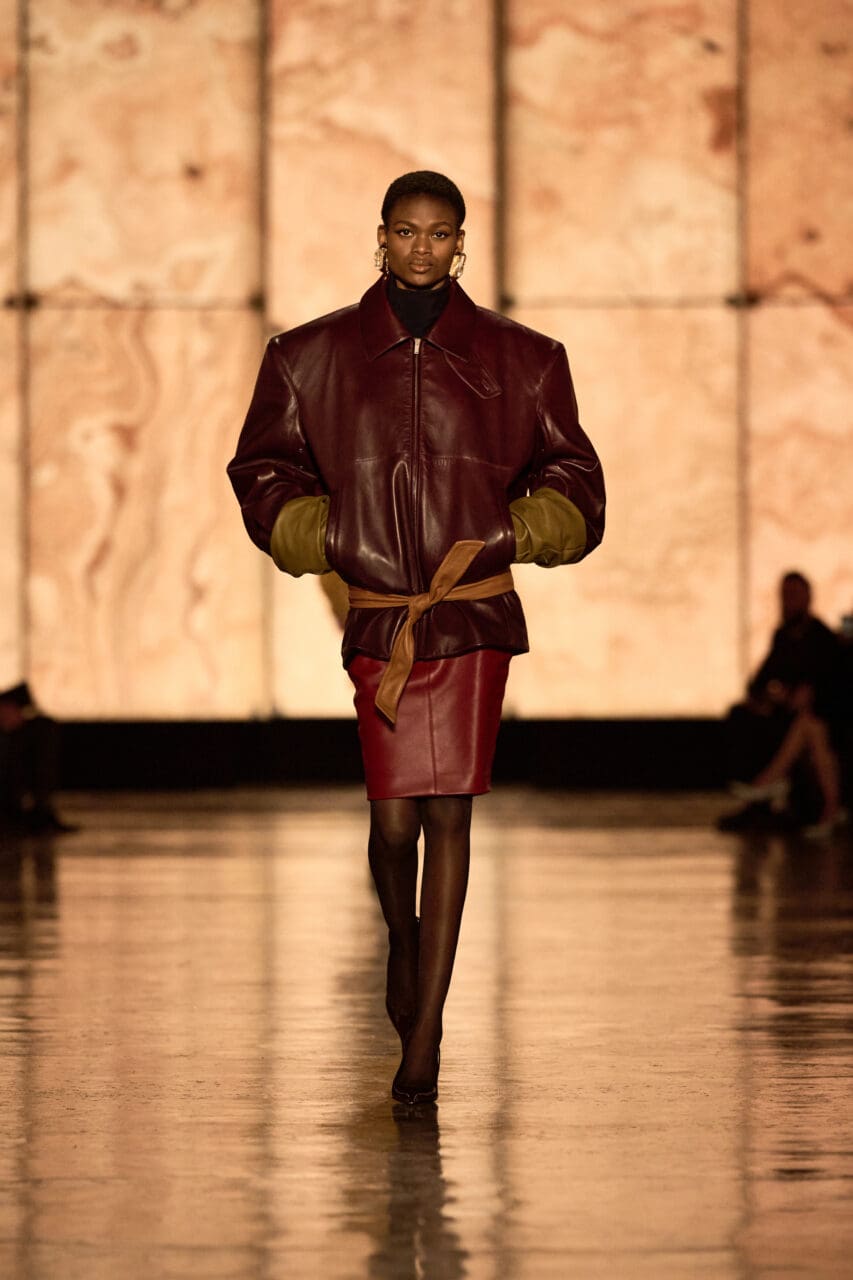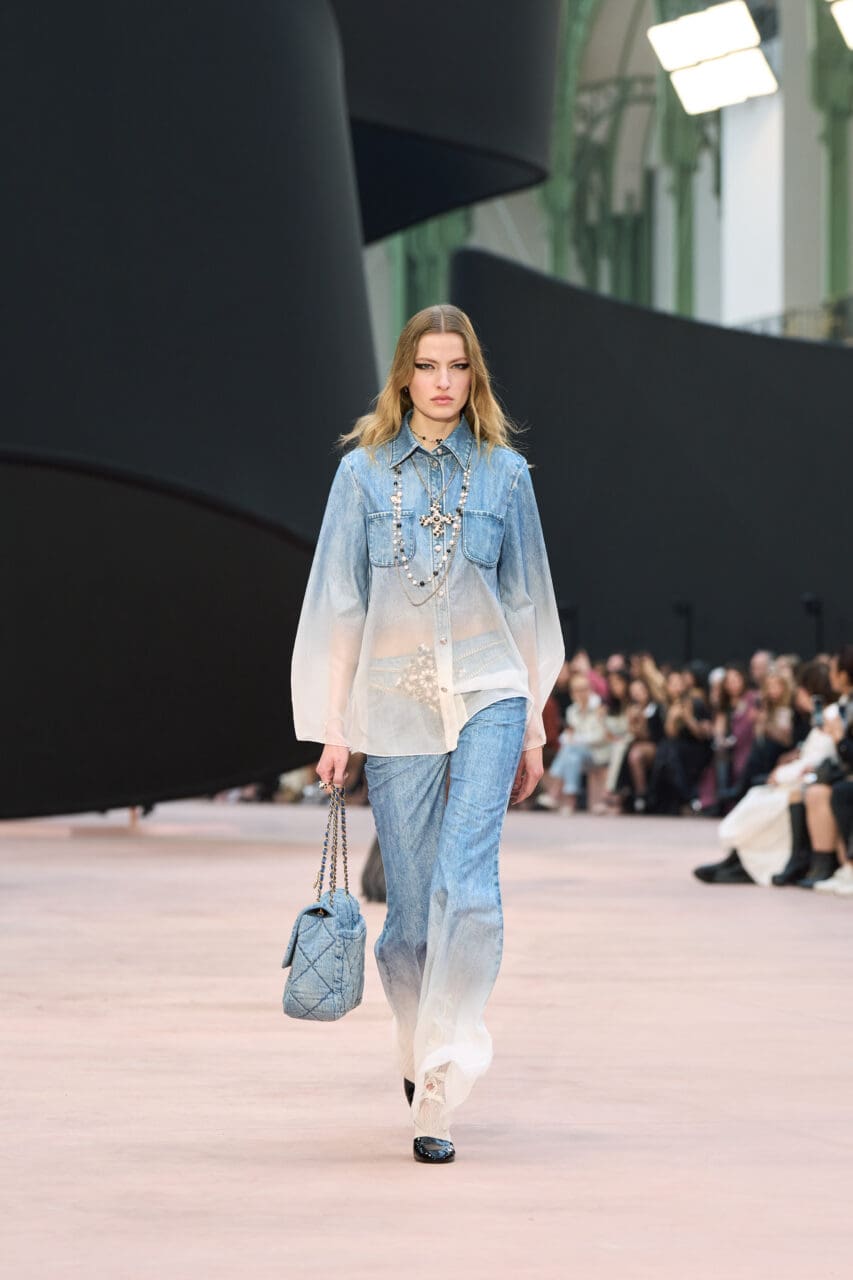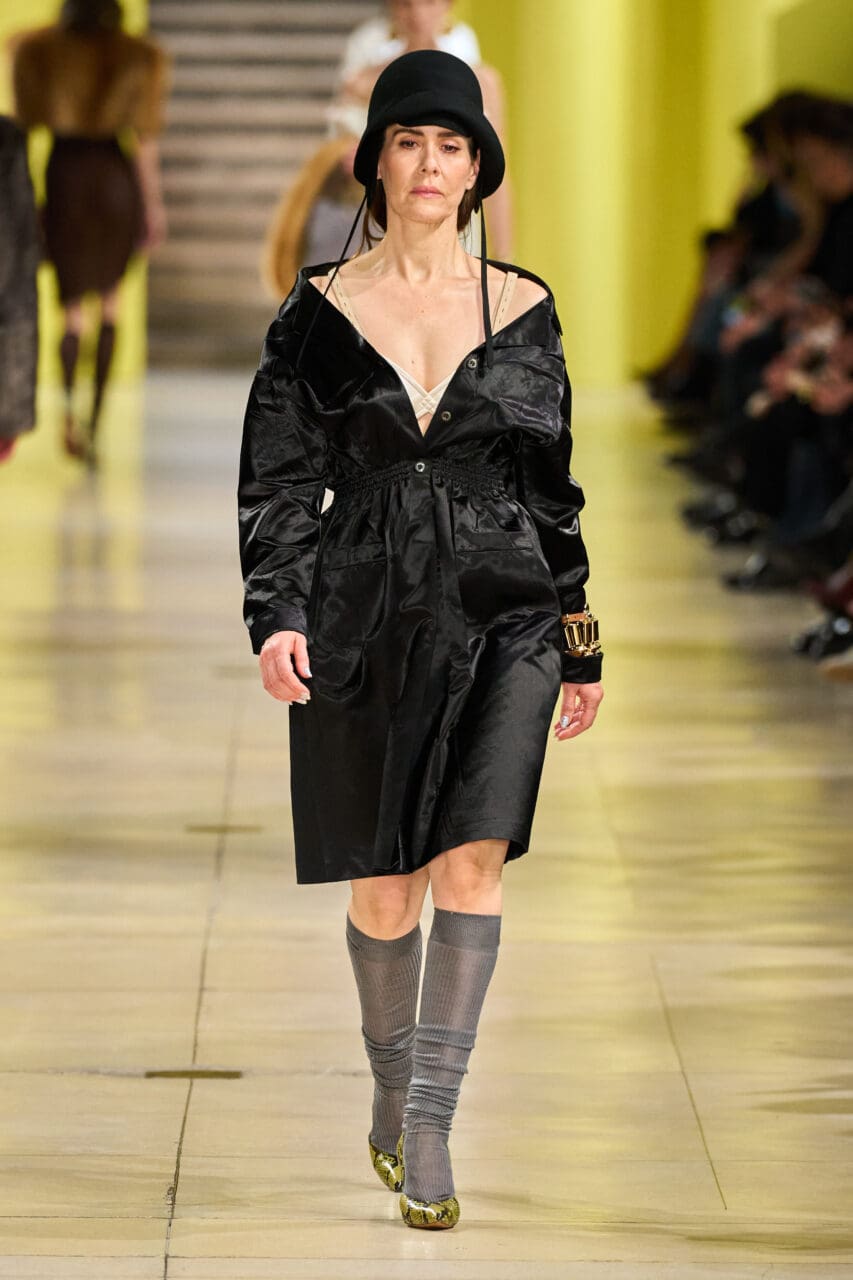“We need civilization.” Rick Owens’s reason for choosing Beethoven’s Symphony No. 7 Allegretto to soundtrack this show worked just as well to explain the whole spectacular shebang. In what should be an instant addition to our recent Most Unforgettable Shows Ever post, Owens this morning gave us 10 looks, each repeated 20 times, on a total of 200 models. It was an assembly, en masse: a mass. Most looks came out in groups of four models in five lines, walking as a phalanx. In one of the later looks a group of barrel-chested strongmen in Tanja Vidic-designed wrapped knit shirts, side-split shorts, and Geobasket sneakers acted as stern litter-bearers to a trio of contorting corseted gymnasts who flew a flag on which was printed two forearms, clasped together. Following the intimacy of last season’s Porterville shows at Owens’s home, this Hollywood sequel on the Palais de Tokyo esplanade was all spine-tingling grandeur.
The show was both subjectively Rick-specific and like all true art much more broadly resonant. The personal stuff related to Owens’s transition from (relative) innocence to (relative) experience. While still at school in Porterville, he was influenced by his parents to adore the epically choreographed spectacles of Hollywood’s Golden Age: the kaleidoscopic choreography of Busby Berkeley and the swords and sandals splendour of Cecil B. DeMille. “Claudette Colbert as Cleopatra has always been my favourite idiosyncrasy,” said Owens. This show’s format reflected that epic inspiration: part mass tribute, part martial tattoo.
With ceremony must come pomp: yet this pomp was radical. The 200 strong cast included many Owens regulars and some returned prodigals too: Jakob Jakobsson first walked for Owens 22 years ago. The majority of it was populated by those who had responded to the designer’s fashion school-issued open casting for anyone who wanted to join his “white satin army.” Explained Owens: “After I had the shows in the house last season, I realized it was so restrictive. I ended up excluding so many people. So I thought this season, we’ll invite everybody. And all the fashion students who are usually outside the fence, we’re going to have them in the show.” This, he added, made the show “a great exercise in thinking about body types. Because I’m thinking we have 10 looks that have to accommodate every single body. So how do we do that? How do we make it convincingly look like Rick Owens looks? And I think we came up with an answer to that.”
The mass-processional format allowed you to appreciate how each character and attitude was accommodated, while also letting you dwell on the clothes. Owens cheerfully admitted he had mined some of his own ideas here, but added: “sometimes good ideas bear repeating.” Bikers and denims came with a blasted, crusted coatings, sometimes floury, sometimes gloopy, sometimes metallic. Bodies were swathed in layers both to protect and to provoke. The footwear included deflated versions in leather of last season’s pumped up balloon boots. Chiffon cowls encircled faces further edged by exclamation mark shoulders.
The richly mixed tapestry of humans in their Rick-defined raiment frames naturally made you consider diversity and difference and similarity and community. Those frames were created with a sensibility shaped once Owens had left Porterville—at his mother’s insistence—and set out to find his tribe. “Hollywood Boulevard is where I created myself, is where I met myself, I had complete freedom and where I found courage. I was scared because I’d had such a protected life. I had to leave Porterville in order to activate my capacity to explore and experiment.” In today’s many runway characters you suspected there were echoes of that formative demi-monde.
To witness such a broad spectrum of individuals marching as one in uniforms proclaiming allegiance to non-conformity was a wonderful inversion of the usual political thrust behind such precisely choreographed mass displays of humanity. The Allegretto hit you in the guts. And the reposing neoclassical sculpture and art deco modernism of the esplanade seemed never to have worn an Owens show quite so finely. As he put it, ours seems a period of “peak intolerance.” He added: “We’re trying to give people options to what are standard conventional ideas of aesthetics. If we can blur the lines and make people consider other things, maybe that can lead to blurring the lines in consideration of how people treat each other.”
Editor
Luke LeitchCredit
Lead Image: Owenscorp / Courtesy of Rick Owens





